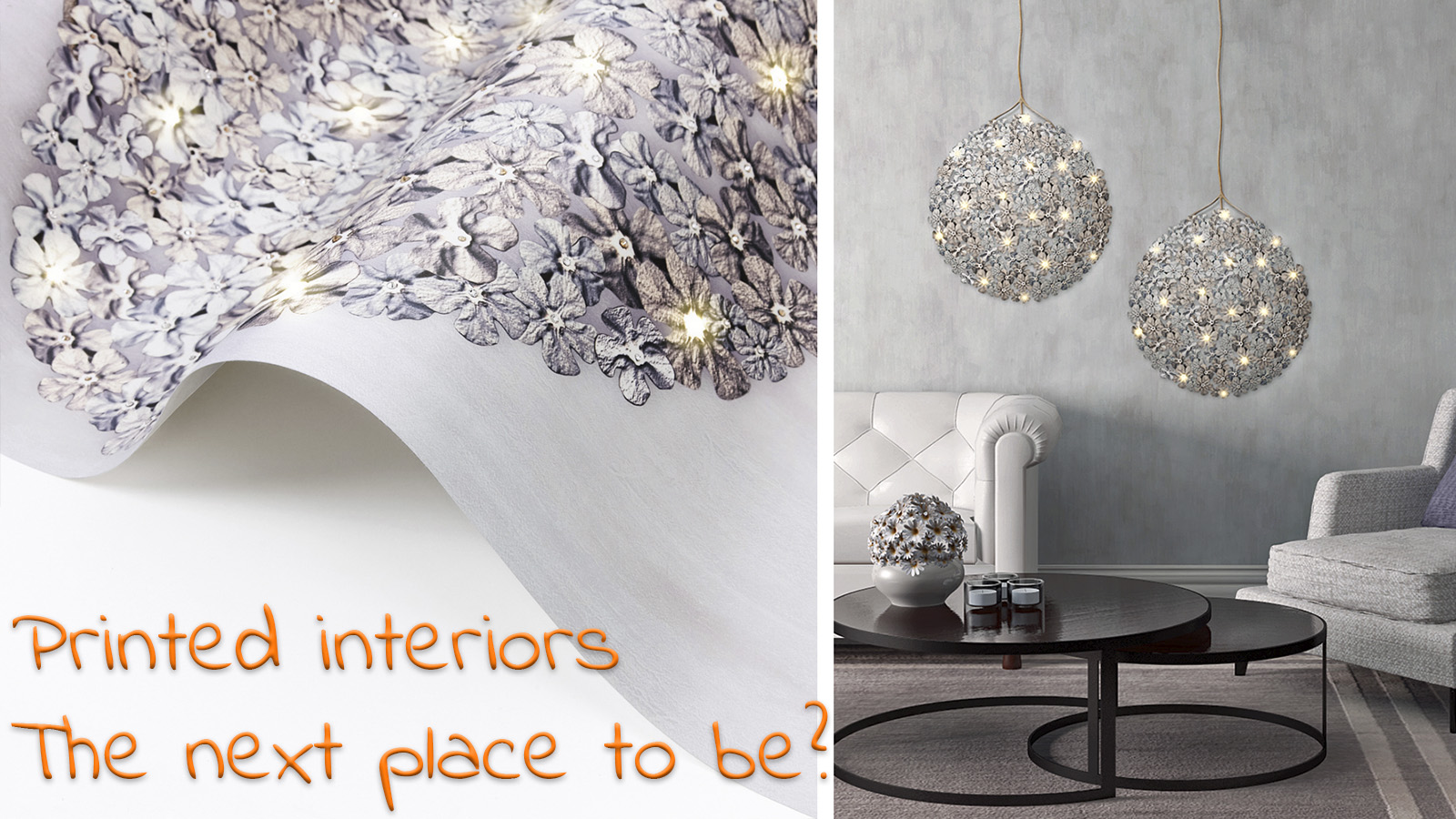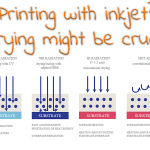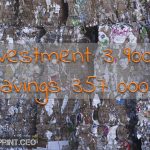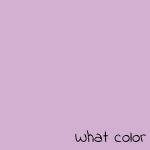
Earlier this month, during the big FESPA show, there was also a little conference called Printeriors. Since I always enjoy conferences, I decided to check it out. Could this be the next big thing for printing companies looking for new opportunities?
CONTENTS: Extremely important: all quality aspects | Also: knowledge and communication! | Why is this important?
The scope of the conference, of the applications shown, was broader than printed ‘interiors’. A lot of applications were for outside. But they all had in common that they were related to decoration and furniture. And that’s really broad: from cushions to wall papers, from acoustics panels to outdoor furniture, from tiles to building wrappings. All of them created with ‘large format printers’.
The video below gives a good overview of the scope of Printeriors.
The time seems to be right for these kind of applications. Digital printers are reaching production speeds, there is a huge variety of substrates available. Designers are discovering the advantages of working with a standard CMYK set instead of the limited number of spot colors with analogue printing. With the current tools, imagination is the only limit.
One of the most interesting presentations was from meystyle.com. A small company in the UK which makes bespoke LED wallpaper and fabric. The company was founded by two sisters and has been specialized in custom designed and therefor exclusive wallpapers. Which now also incorporates LED lights. The video below gives a really good overview of the products they create and produce. The top image is also one of their creations.
Extremely important: all quality aspects
The key factor in this kind of products is quality. In all its aspects. If you are creating cushions and other textile based furniture, abrasion resistance is extremely important. You are creating something that needs to last 10, maybe even 20 years. This is completely different from ‘commercial printing’ where the lifetime of a printed product usually is very short.
Color quality is also extremely important: if you are creating wall papers and floor coverings that exist of different strips that need to be joined, there can not be any color difference in the product. Even the tiniest difference will be visible. For meystyle.com this was the reason for inhouse production: the printing partners they had before couldn’t provide that with that kind of consistency.
And to emphasize this aspect, an anecdote from the past. A long time ago I visited the Chiyoda production plant in Belgium. They print e.g. the paper base material for laminate flooring. This has to be very consistent in color quality: if you have to replace one plank, you want the new one to be exactly the same as the old, adjacent ones. My guide during the visit was the quality coordinator and one of the places we visited was their QA lab. They were just checking the colors of a reprint. In the light booth they had two samples: the reference sample and the actual print. I couldn’t see any difference, but the trained eye of the quality coordinator saw a big difference between the two…
One of the designers at the conference also mentioned the fact that you need to consider the substrate and the design as one unit. You can’t just ‘swap’ one substrate with another: one design might be perfect on a fine substrate (e.g. silk), but not on a rough one (e.g. canvas).
Also: knowledge and communication!
While not being mentioned explicitly during the presentations, it became very clear during the panel discussion: communication between designer and printer is really key. Communication about the possible substrates, with all their properties and limitations. About the ink sets used. About the files needed for production. And that might be the biggest hurdle for printing companies looking into this market segment: having that knowledge and being able to clearly communicate that with the designers. But it is really necessary: you are going to print on very expensive materials and the quality expectations are much higher than what you are used to.
With several of the speakers this is where it went wrong in the past with their print suppliers. This is why they decided to take production inside.
Why is this important?
Printed interiors is not just something that is forced upon us by equipment vendors to sell machines. There is a huge market, that is just starting to develop. Especially customization and exclusivity are making this an interesting, profitable market segment. But you have to be able to live up to the expectations: the highest color consistency possible, products that will last a lifetime and clear communication. If you can deliver those, a wonderful future awaits you!
PS: if you want more information, check out the YouTube channel from TrendEase! This is one of their interviews, with a printer that produces this kind of products.
Credit top image: Digitally printed LED wallpaper with crystals Germanium, by Viarasp





We started an online platform to share the latest and groundbreaking printed interior projects. Have a look. http://www.interiorsprinted.com
Nice!